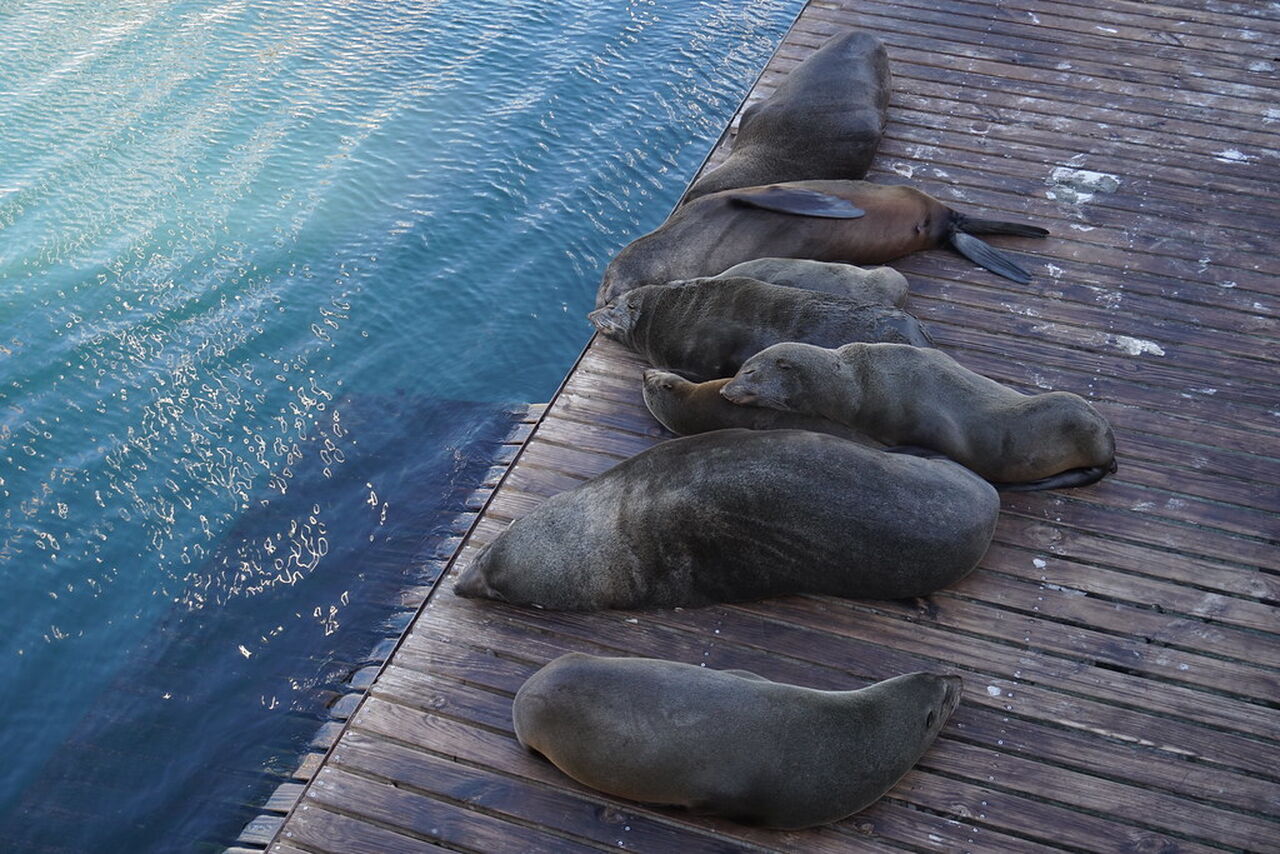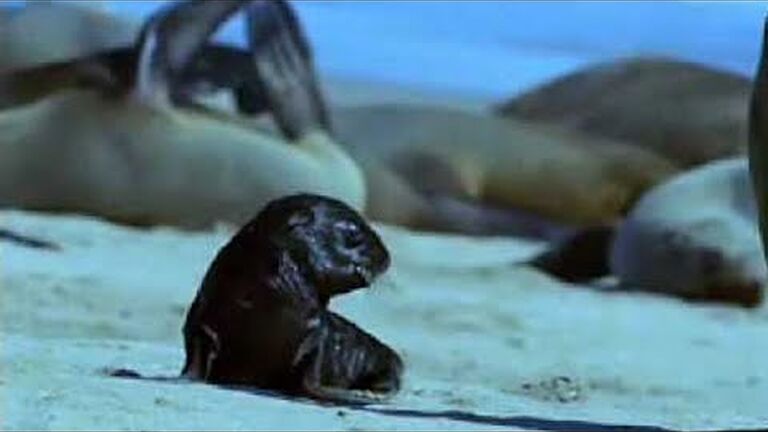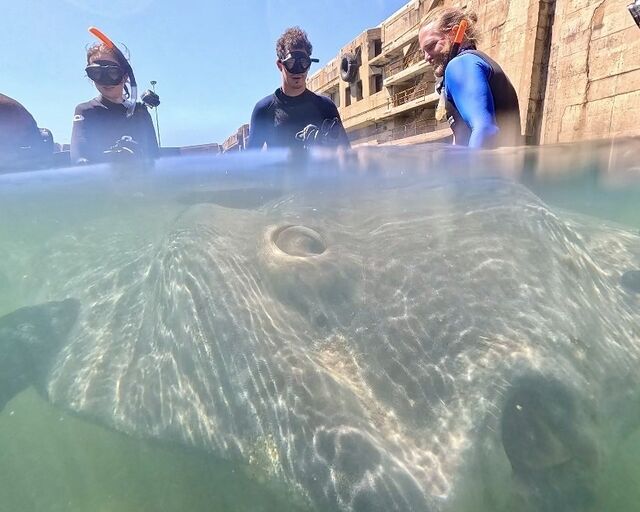When we talk about "seals" here in South Africa, we mean one specific animal - the Cape fur seal (Arctocephalus pusillus pusillus), the only seal species that is truly native to the South African mainland. This species is the one you'll see in our harbours, at tourist destinations and diving sites, and the one you'll most likely see in animal welfare stories from organisations such as the Two Oceans Aquarium Foundation, the V&A Waterfront Marine Wildlife Programme and the SPCA. So, let's get to know our local sea dog a bit better!
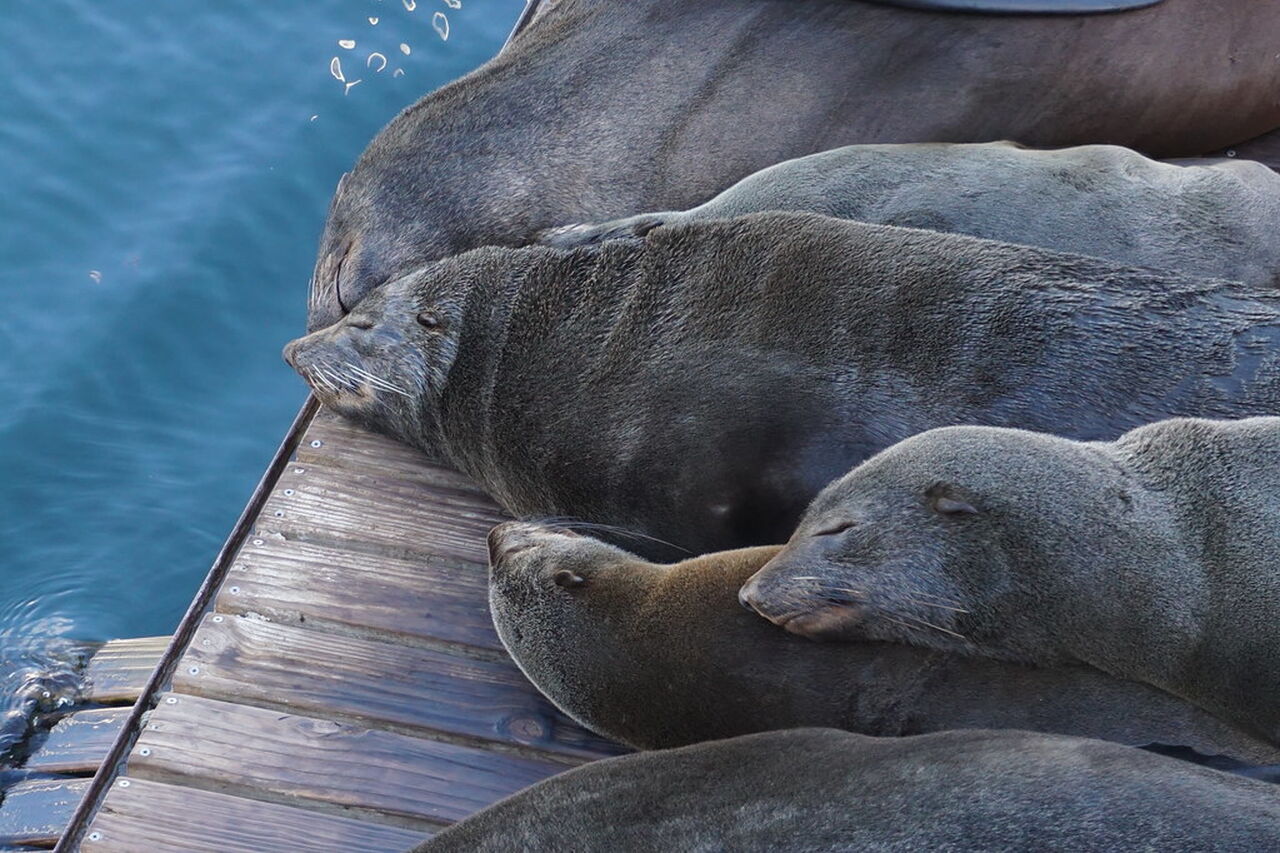
Cape fur seals, also known as South African seals or brown seals, are by far the largest and most muscular members of the fur sea family (more on that later). Technically they are divided into two subspecies, A. p. pusillus - which are larger and found on the southern African coast, and A. p. doriferus - which are smaller and occupy Australia's Victorian coast and Tasmania. Another difference between the two populations is that the South African seals eat mostly fish, while the Australian seals prey mostly on squid.
It is estimated that approximately two million Cape fur seals inhabit the coasts of southern Africa, mostly living in 25-40 colonies on rocky coastlines and islands - if you see a seal while in South Africa, it is almost certainly one of these. Like all other seals, Cape fur seals are semi-aquatic mammals that are carnivores and spend their time at sea hunting, and their time on land caring for their young, resting, healing and moulting. This semi-aquatic lifestyle puts them at great risk of encountering human-caused hazards like fishing gear, boats, hunters and plastic pollution.
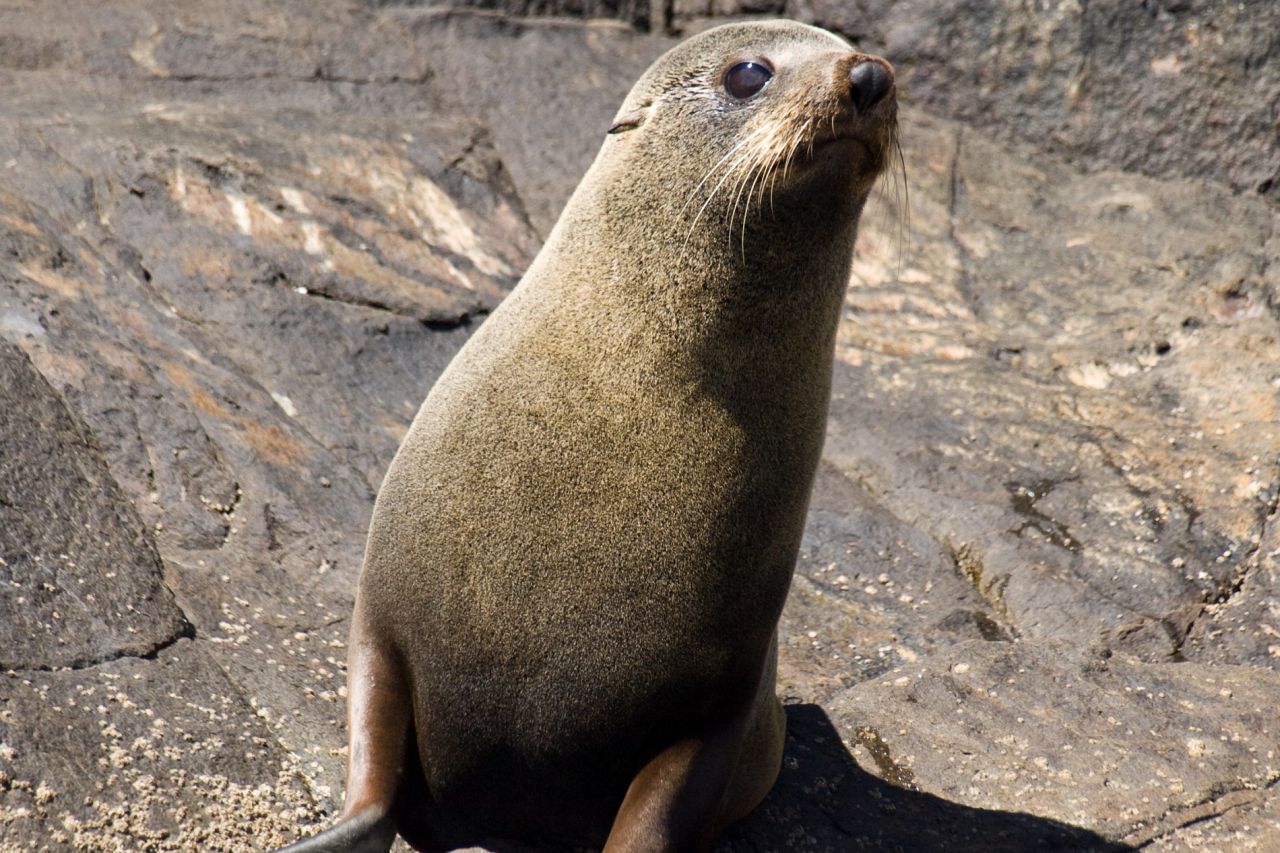
"True seals" vs. "Fur seals"
Strictly speaking, "seals" are divided into three families: fur seals (Otariidae), true seals (Phocidae) and walruses (Odobenidae). Today, there are 33 living species of seals across the globe, ranging from the small <40kg Baikal seals of Siberia to the >3 000kg elephant seals of Antarctica. All seals have a common ancestor, and genetic testing has shown that their closest living land relatives are bears and raccoons. This extended family is known as the carnivorans, and seals are by far the largest of the bunch!
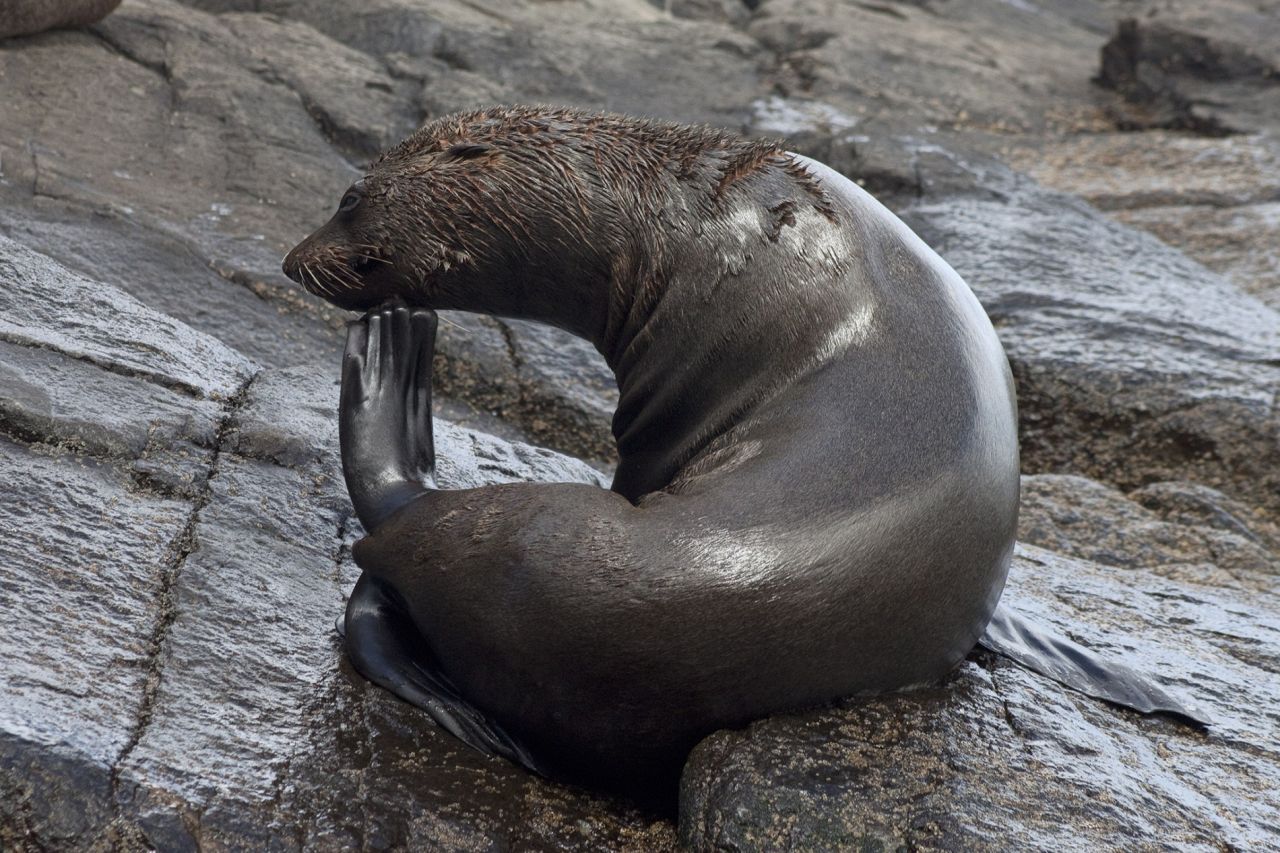
Cape fur seals are not "true seals". Officially known as "eared seals" or "otariids", fur seals differ from true seals in that their ears have external flaps, they have large fore flippers, and their hind flippers are not connected to the pelvis and can be rotated forward. These adaptations give eared seals the ability to walk and gallop on land, hear the direction of sound in air, and swim and manoeuvre much more powerfully than true seals.
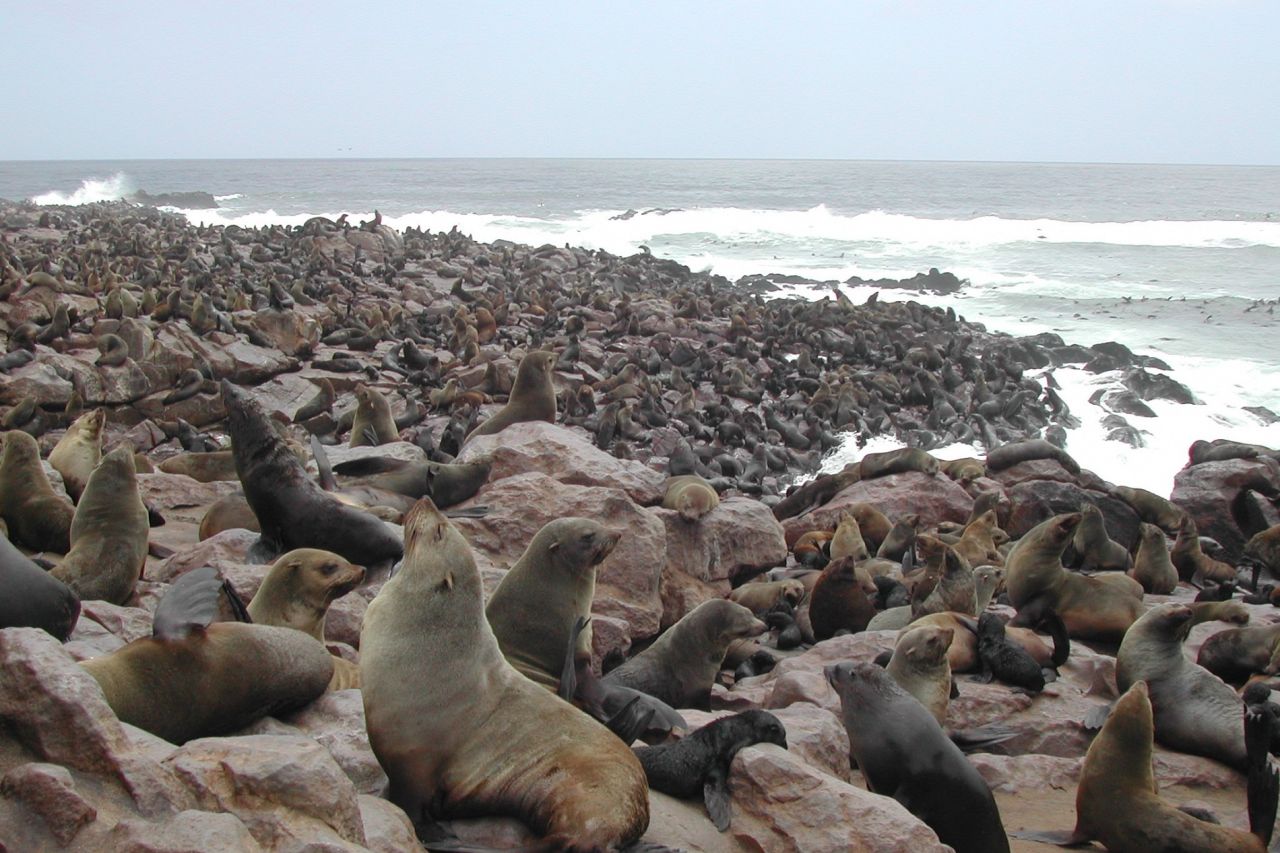
Lifecycle
Cape fur seals begin life on land, under the care of their mothers and are born between late November and early December. Unlike the brown fur of the adults, they are born black and will become grey as they moult within the first few months of their lives. For about six months, they will feed off their mother's milk - the mothers alternate between spending up to a week at sea and a few days on land to care for their pups. Because pups are not born with any insulating fat, they cannot enter the water and are entirely dependent on their mothers for care - although they have been observed forming groups and playing while waiting for the females to return!
By around March, the pups will have grown enough to enter the water themselves. Although at this point they are still dependent on their mothers for food, by playing and experimenting in the water they soon learn to fend for themselves - giving their mothers the freedom to stock up sufficient fat reserves for their next pregnancies!
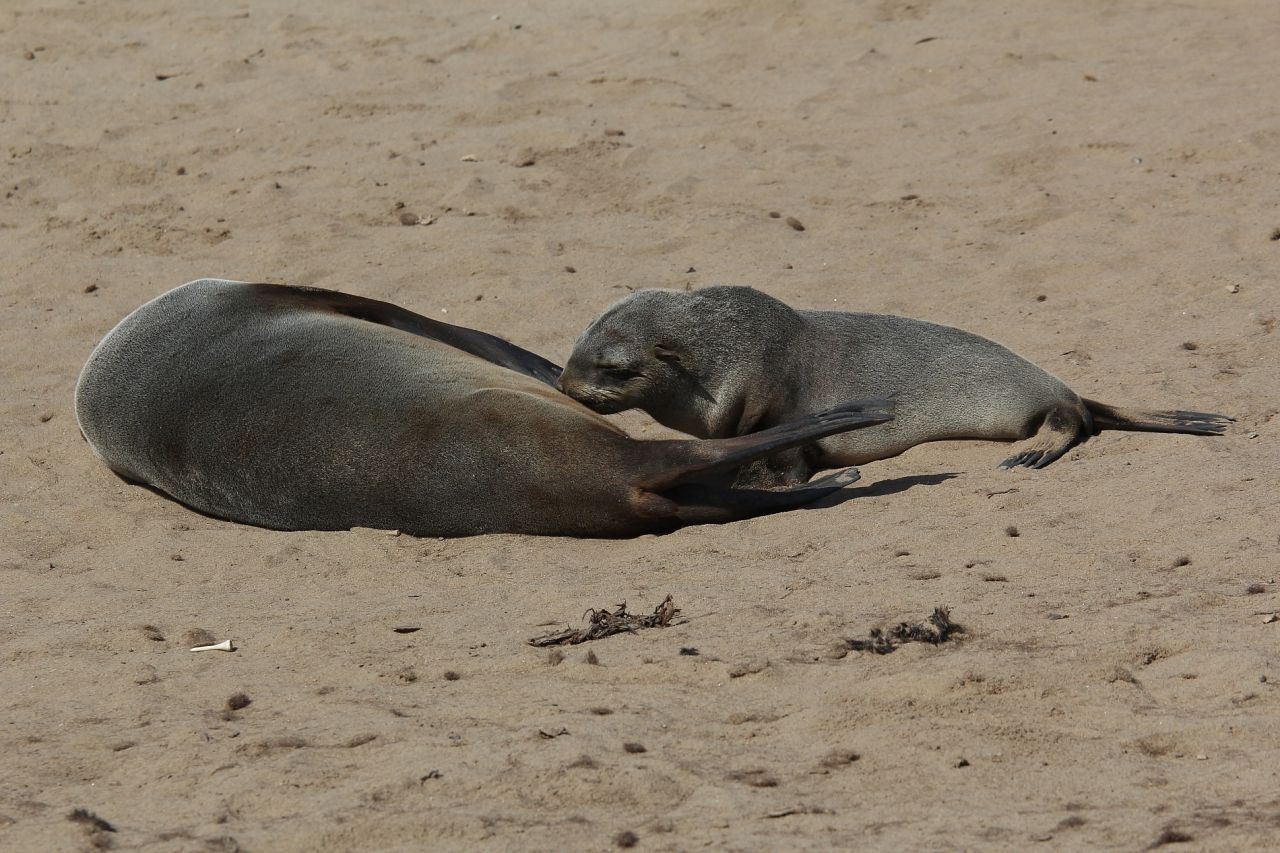
After a year, the pups develop a silvery-grey coat and have gained about as much independence as a full-fledged adult. Females will reach sexual maturity at about three or four years of age, and males at four or five years. However, these small males rarely mate, and usually only reproduce at an age of about 10 years. Overall, they can reach upwards of 21 years of age!
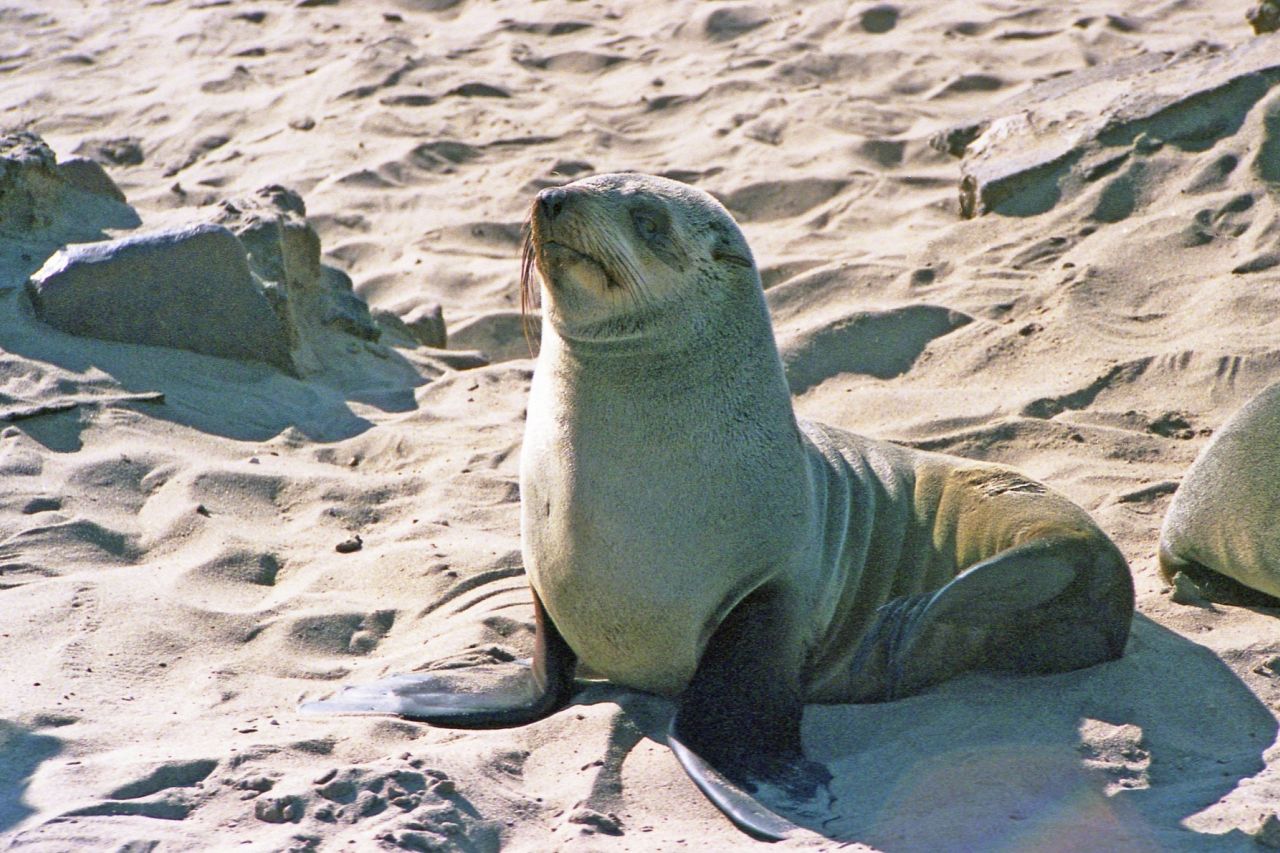
Like many seal species, Cape fur seals display a large degree of sexual dimorphism - meaning that males are significantly larger than females, almost double their size (males grow to about 350kg, females only reach about 150kg). In October, males rely on their size to establish control over a piece of territory and fend off other males. While waiting for the females to return, the male will have to fast for up to six weeks - so being bulky gives him the reserves to keep watch for the competition. In general, males prefer territory near the water's edge, and as large as they are able to control. A particularly successful male in a large colony might have a territory large enough for 50 females!
By mid-November, once the males have established their territories, the females return and fight amongst themselves to establish their own, smaller territories in locations where they have access to their choice of mate, and where they think they'll have the safety to give birth. Even though these territories always fall within the territory of one of the males, the male seals do not play a role in choosing their mates. In the safety of her chosen territory, the females give birth to the pups that were conceived the previous year, and after sufficient time to recover and care for their newborns, they will mate with the dominant male.
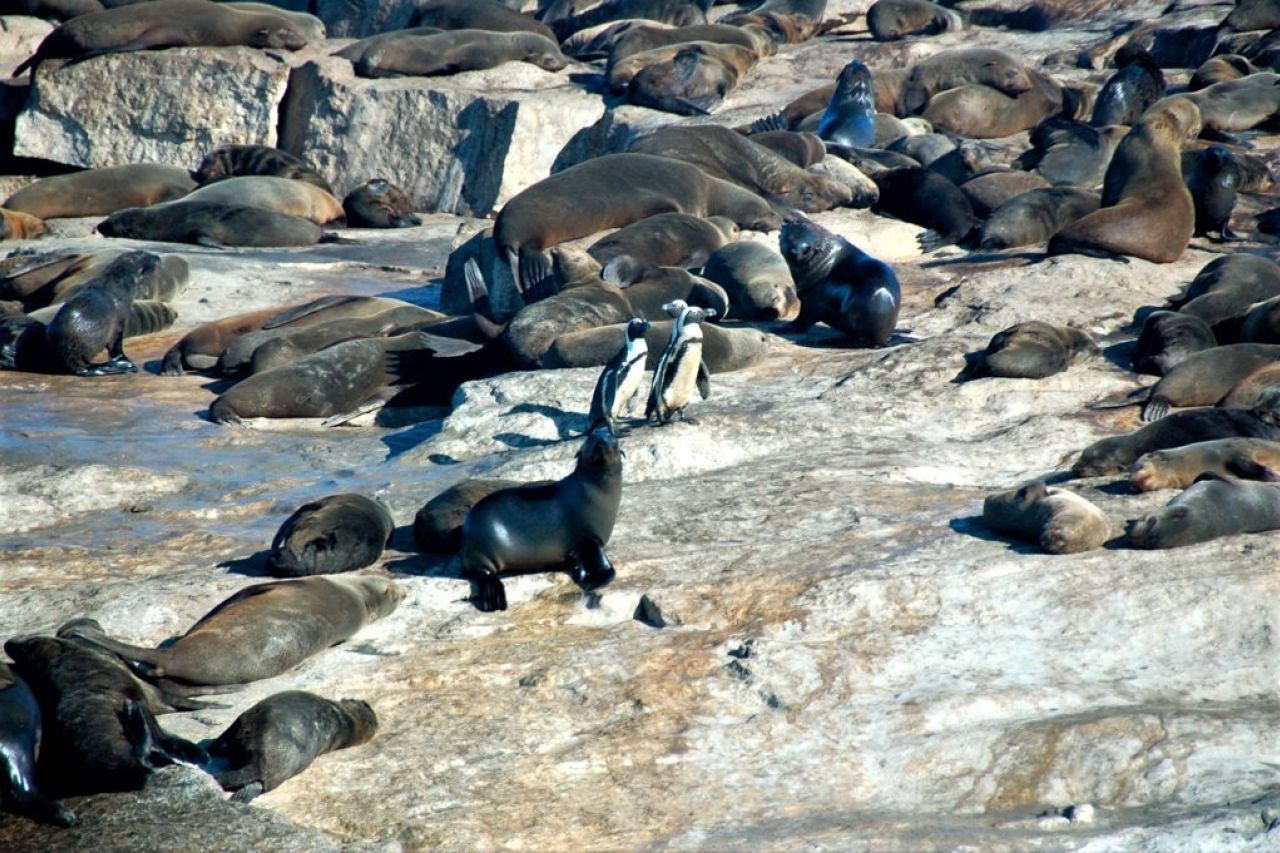
The gestation period for a Cape fur seal is only eight months, but the females can delay their pregnancies for three to four months - ensuring that their birth will line up for the next year's summer, and so the cycle repeats itself!
Life at sea
Being an amphibious animal like a seal presents some unusual problems - and some unusual solutions! Take sleeping for example: On land, Cape fur seals sleep a bit like us - they snooze, and occasionally they grumpily open an eye to look around for predators. But in the water, their way of sleeping more closely resembles that of dolphins; they are able to shut down different parts of their brains at different times so that they can always paddle and stay with their hunting party.
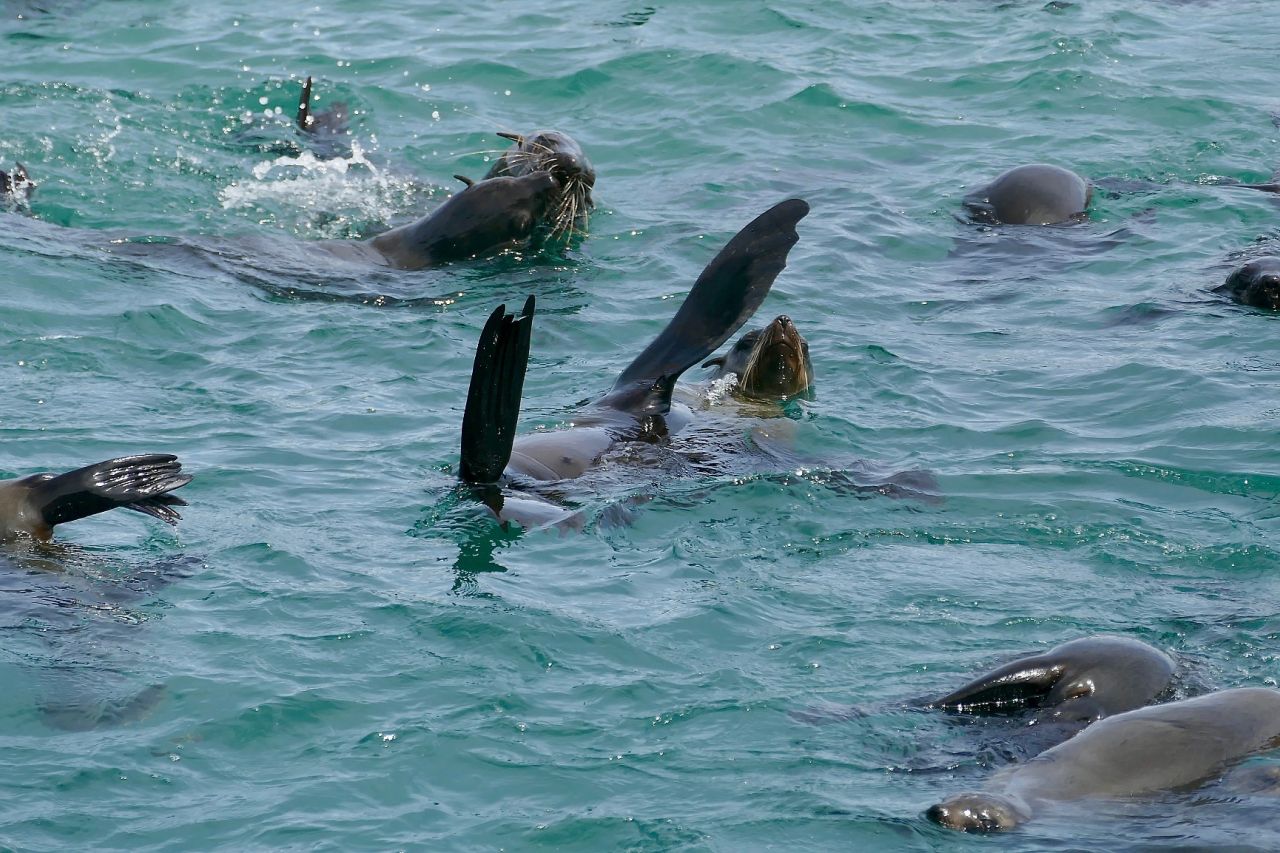
Outside of the breeding seasons, they spend most of their lives at sea (although some do spend a lot of time at their colony). They form hunting parties of up to 20 seals, and track shoaling fish and sometimes squid, diving up to 200m deep to catch them. In recent years, because of overfishing, they have had to adapt and it is not uncommon to see Cape fur seals specialising in finding alternative foods like octopuses, rays, crayfish and even large sharks. Generally, seals will hunt cooperatively when targeting large schools of fish, but hunt alone when pursuing scarce or solitary prey. Seals will swallow smaller prey whole underwater, and they have specialised digestive systems that can process the seawater swallowed this way. For larger prey, such as penguins or big fish, they will surface and thrash the prey about to kill it, and to break the carcass into smaller pieces.
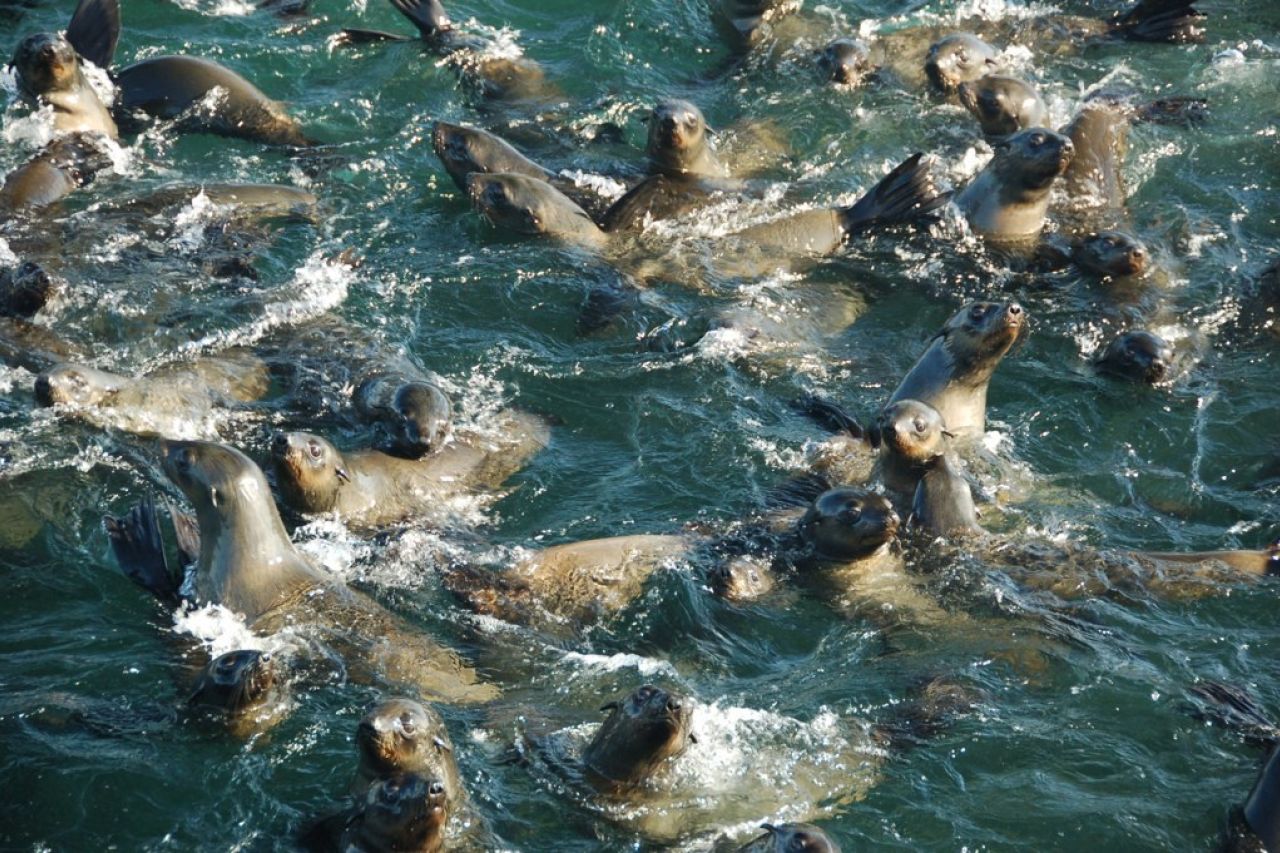
Because of their large size, adult Cape fur seals do not have many predators. At sea, only large sharks, like great whites, routinely eat them, and on land, their main natural predators are hyenas and jackals - although as discussed earlier, fur seals are well-suited to "gallop" to safety on land if needed. In recent years, domestic and feral dogs and humans have become an increased predation risk for them.
Conservation
The two million-strong population of Cape fur seals is regarded as stable, and even growing in some areas. This is largely due to their intelligence and ability to adapt to an environment constantly being changed by humans. Unfortunately, this contact between seals and humans means that there are a great many controversial issues of animal welfare and cruelty to contend with.
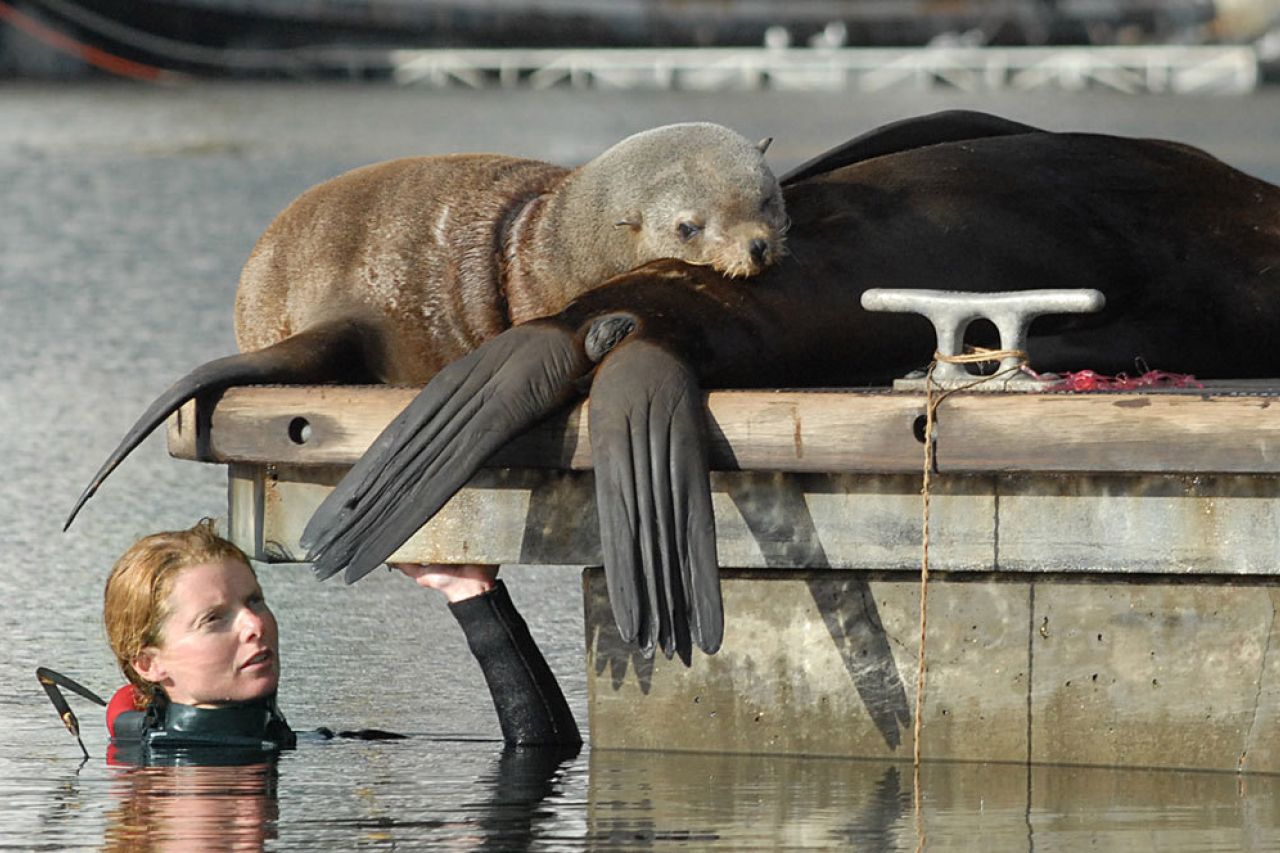
In South Africa, seals have been a protected species since 1893, but the reality is that they were commercially hunted until 1990. In Namibia, where about 75% of Cape fur seals live, an annual hunting season takes place between August and November. In the 2019 fishing year, the hunting limit was set at 60 000 pups (hunted for their fur) and 8 000 adult males (hunted for their meat, and testicles which are used as an aphrodisiac). Despite criticism from conservation groups, the Namibian government maintains the stance that their activities are sustainable.
Unfortunately, a common misconception among fishermen is that seals are competition for fish and are a "pest". In reality, fish numbers are declining due to human actions, and seals are simply encountering humans more often in their search for food - often the offal that the fishermen themselves discard. This misconception is used to justify the intentional killing of seals, such as the Namibian seal hunts and local incidents, such as the regular illegal shooting and gaffing of seals around Cape Town.
On a positive note, many people and organisations are working to protect the welfare of seals in South Africa. The SPCA deals directly with all issues of stranded and injured seals, with the support of too many local organisations to even begin to name! In the V&A Waterfront, the welfare of seals that become entangled in plastic pollution is taken care of by the Two Oceans Aquarium and the Two Oceans Aquarium Foundation in conjunction with the V&A Waterfront's Wildlife Management Programme.
Vagrant seals that find their way onto South African shores are often the subject of much media attention and local tour operators and photographers often become the champions of keeping these animals safe, in collaboration with the SPCA and municipalities. Vagrants that are in need of care, particularly stranded pups, are often cared for by one of South Africa's aquariums, and we've been able to work with both Bayworld and SAAMBR to facilitate the release and tracking of these unique visitors.
We hope you've learned something new about our local seals, but there is a lot more to discover about our South African marine wildlife - step into the Two Oceans Aquarium to enter the underwater world.
